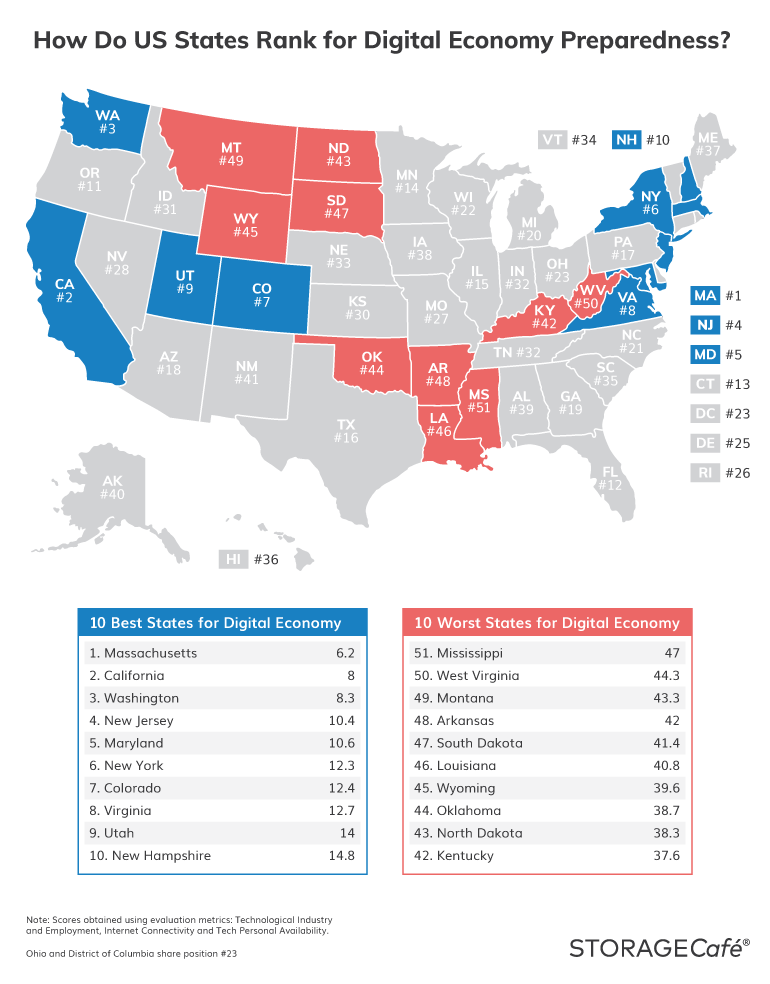As a great deal of commerce has swiftly moved online to cope with coronavirus pandemic-related shutdowns, the local economy — and by extension, the real estate market — will depend upon technology to dig out of its current hole. How prepared is Houston to accomplish that?
A new analysis by STORAGECafé, a storage space marketplace built by real estate data firm Yardi, looked at how well networked certain regions of the country are — as well as how ingrained technology is in their local economies — to get at this question.
As any real estate professional knows, a booming local economy will lead to a more robust real estate market. Companies that are providing the digital tools we need to keep remote work going are expanding during this crisis, so it makes sense that areas where more people work in the tech sector could bounce back faster if these jobs are more plentiful during a time of record-high unemployment.
Texas ranked 5th in terms of overall tech industry employment, with 7.6% of its workforce in the tech sector, an industry that contributes to 8.3% of the state’s GDP. Uday Karmarkar, a professor at UCLA, called out Houston as a possible beneficiary due to its ties to the telecom industry, but also added that “the use of remote services is pervasive and not heavily regionalized. The differences are more generational, by industry and urban versus rural rather than by geography.”
With many jobs moving partially or wholly online in the wake of COVID-19-related shutdowns, it’s also important that residents have reliable internet access and hardware. This may cause immigration to certain areas where workers are now allowed to work remotely 100% of the time.
Texas ranked 27th in terms of the personal availability of technology in the report, with 89.2% of households owning a computer and 89.7% reporting an internet subscription. Of course, just being connected to the internet won’t always be enough to run virtual meetings. Unfortunately, the state sank a bit when it comes to overall connectivity; Texas came in 29th, reporting 86.9% broadband coverage.
Statewide data does have its drawbacks when it comes to technology coverage, though. “What the pandemic has laid bare is how stark are the contrasts in readiness between urban and suburban areas within states,” Lee W. McKnight, associate professor at Syracuse University’s School of Information Studies, said in the report. “Inner-city, low-income neighborhoods are also badly underserved and not digital economy-ready. Since they either don’t even have the underlying infrastructure needed to access and work in the digital economy, or even if they do, many do not have the income or personal technology, education and training required. We tend to forget, but half the world’s population is not on the internet yet.”

